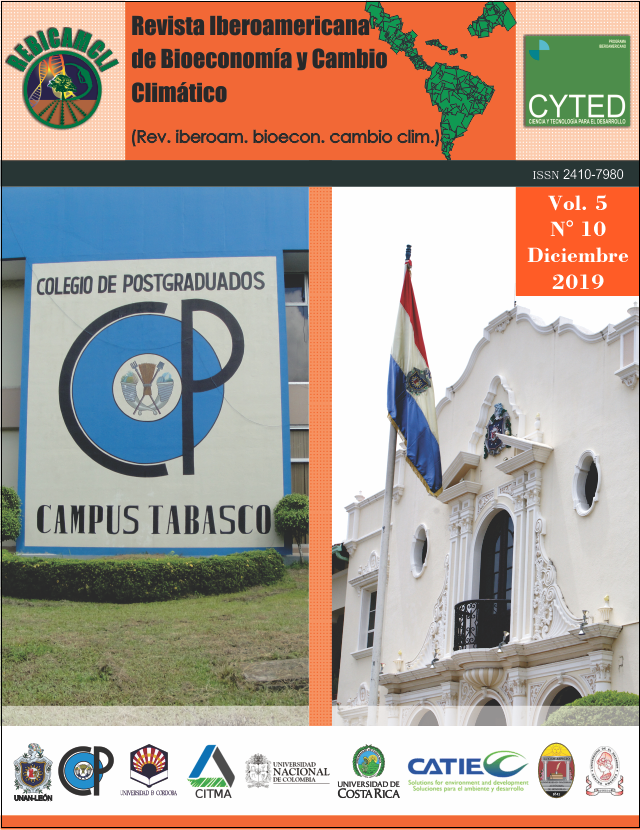Estimación in vivo de la canal porcina por el método de ultrasonografía: Un Enfoque de la Ecointensificación en Bioeconomia Porcina
DOI:
https://doi.org/10.5377/ribcc.v5i10.8966Palabras clave:
Predicción, Canal, Porcino, Espesor muscular, EcointensificacionResumen
En este estudio se analiza la relación entre el espesor de grasa subcutánea (EGS), espesor muscular (EM) y espesor de grasa subcutánea y espesor muscular juntos (EGSM), medidos con ultrasonido en un solo punto anatómico de cerdos vivos y los parámetros más importantes de la canal (Peso vivo, Peso de la canal, carne clase A, B, C que corresponden a las carnes de primera, segunda y tercera categoría, y cortes específicos cómo lomo, posta de pierna y aguja). En nuestro experimento utilizamos cerdos híbridos de las razas Pietrain, Landrace y Yorkshire en cantidad de 25 animales de ambos sexos. Los resultados del estudio sugieren que los parámetros de la composición de la canal aquí analizados (Peso vivo, peso de la canal, carne clase A, B, C y cortes específicos, lomo, posta de pierna y aguja) están altamente correlacionados con el espesor de la grasa subcutánea medida con el ultrasonido en la última costilla del musculo longuísimo dorsal en el lado izquierdo del cerdo vivo (r = 0.53 - 0.67). La correlación múltiple del modelo de predicción de regresión lineal entre los parámetros de la canal y el espesor de grasa dorsal fue (0.74) y el coeficiente de determinación mostró suficiente capacidad de predicción (R2 = 0.55). Los modelos de predicción de regresión lineal de los componentes de la canal con el espesor muscular obtuvieron baja capacidad de predicción (R2 = 0.23). Igualmente en el modelo de regresión del espesor de grasa subcutánea y espesor muscular juntos ( R2= 0.25). Entre las correlaciones más importantes encontradas están: lomo derecho, carne clase A (r = 0.80), peso vivo y canal entera (r = 0.85) paleta derecha y carne clase B (r = 0.88) siendo este patrón repetitivo en todas las correlaciones de las mediciones ultrasonografica y los componentes de la canal. Los resultados obtenidos en el presente trabajo alientan su utilización como técnica predictoria de la composición de la canal porcina en el sendero productivo Ecointensificación de la Bioeconomia.
Descargas
Descargas
Publicado
Cómo citar
Número
Sección
Licencia
Copyright © 2023 Rev. iberoam. bioecon. cambio clim. Universidad Nacional Autónoma de Nicaragua León Colegio Postgraduados y UNAN-León, Escuela de ciencias agrarias y veterinarias/ Departamento de Agroecología/Centro de Investigación en Bioeconomía y Cambio climatico (CIByCC).







